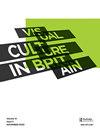Black Mirror 0 edited by Judith Noble, Dominic Shepherd and Robert Ansell
Q2 Arts and Humanities
引用次数: 0
Abstract
The Black Mirror Network, operating out of Bournemouth, aims to address works from the modernist era to the present, dealing with ‘magic, enchantment, the occult and the esoteric’. In the wake of the industrial revolution, these interests have indeed been omni-present in the arts and visual culture, especially in the British archipelago, home of La Belle Dame Sans Merci, the Pre-Raphaelites, Dracula, the Cottlesloe Fairies, Crowley, Dion Fortune, Tolkien, Sgt. Pepper, J.K Rowling and Alan Moore. And the idea that such concerns are central to modernist and contemporary art is not in itself novel. Esotericism was important in Dada and surrealism and has a strong legacy in current avant-garde and commercial art. Magic and the occult can be found at centre stage in the popular culture of pretty nearly any media or period. Black Mirror 0 is the first of a series, each volume organised by theme: embodiment, elsewhere, patterns, desire. This one is territory; meaning the range of (inter)disciplinary terrain(s) on which the authors mount their investigation. After the Introduction, there are seven pieces: three of art criticism/theory, one of art history, one of literary-cultural history, one by a magician, and an interview with artist Marie von Heyl. Justifying the remit for both series and volume, the Introduction overstates its case somewhat: esoteric content in modern art is not only marginalized but negated by critical culture – claims undermined by the editors’ own references and those in the following essays.Judith Noble、Dominic Shepherd和Robert Ansell编辑的《黑镜0》
黑镜网络在伯恩茅斯运营,旨在处理从现代主义时代到现在的作品,涉及“魔法、魅力、神秘和深奥”。在工业革命之后,这些兴趣确实在艺术和视觉文化中无处不在,尤其是在英国群岛,那里是La Belle Dame Sans Merci、拉斐尔前派、德古拉、科特勒童话、克劳利、迪翁·福琼、托尔金、佩珀中士、J·K·罗琳和艾伦·摩尔的故乡。这种关注是现代主义和当代艺术的核心的想法本身并不新颖。神秘主义在达达主义和超现实主义中很重要,在当前的先锋派和商业艺术中也有着强大的遗产。魔术和神秘主义几乎在任何媒体或时期的流行文化中都可以找到。《黑镜0》是一个系列的第一部,每卷都按主题组织:化身、别处、图案、欲望。这是领土;这意味着作者展开调查的(跨)学科领域的范围。在引言之后,共有七篇:三篇艺术批评/理论,一篇艺术史,一篇文学文化史,一位魔术师,以及对艺术家Marie von Heyl的采访。为了证明系列和卷的职权范围,引言在一定程度上夸大了它的情况:现代艺术中深奥的内容不仅被边缘化,而且被批判文化所否定——这些说法被编辑自己和以下文章中的参考文献所破坏。
本文章由计算机程序翻译,如有差异,请以英文原文为准。
求助全文
约1分钟内获得全文
求助全文
来源期刊

Visual Culture in Britain
Arts and Humanities-Visual Arts and Performing Arts
CiteScore
0.60
自引率
0.00%
发文量
1
 求助内容:
求助内容: 应助结果提醒方式:
应助结果提醒方式:


